The Big Sur Region, California, USA: A Timeless Natural Wonder
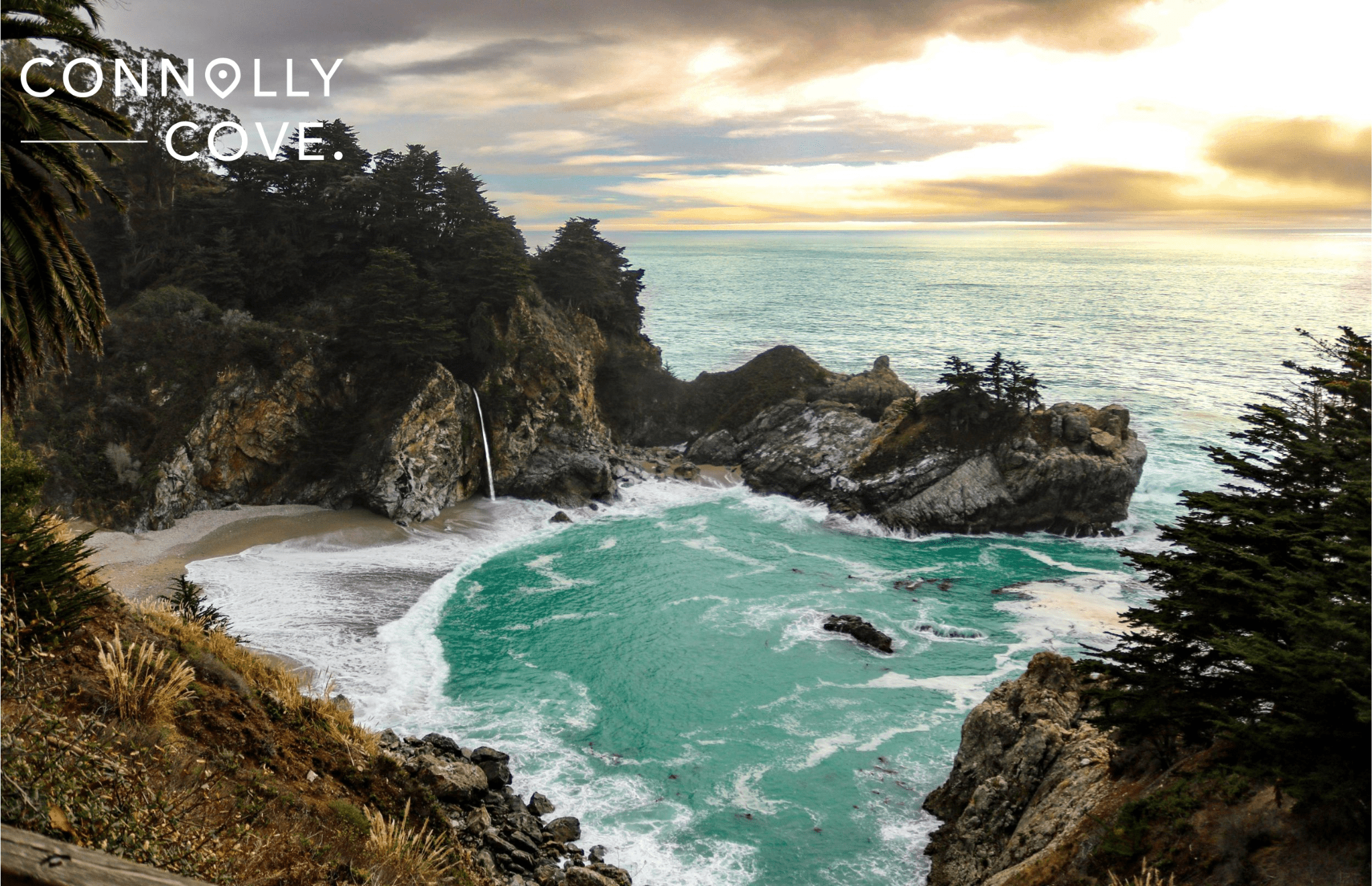
Updated On: November 10, 2023 by Courtney Augello
Along California’s rugged and mesmerising coastline, the Big Sur Region is a geographical marvel that has captivated the hearts and minds of visitors for generations. This enchanting area of the Golden State is not just a destination but an experience of the unspoiled beauty of the natural world.
From its dramatic cliffs and ancient redwood forests to its iconic Highway 1 and cultural heritage, the Big Sur Region tells a story of history, wonder, and inspiration that transcends time and creates unforgettable memories.
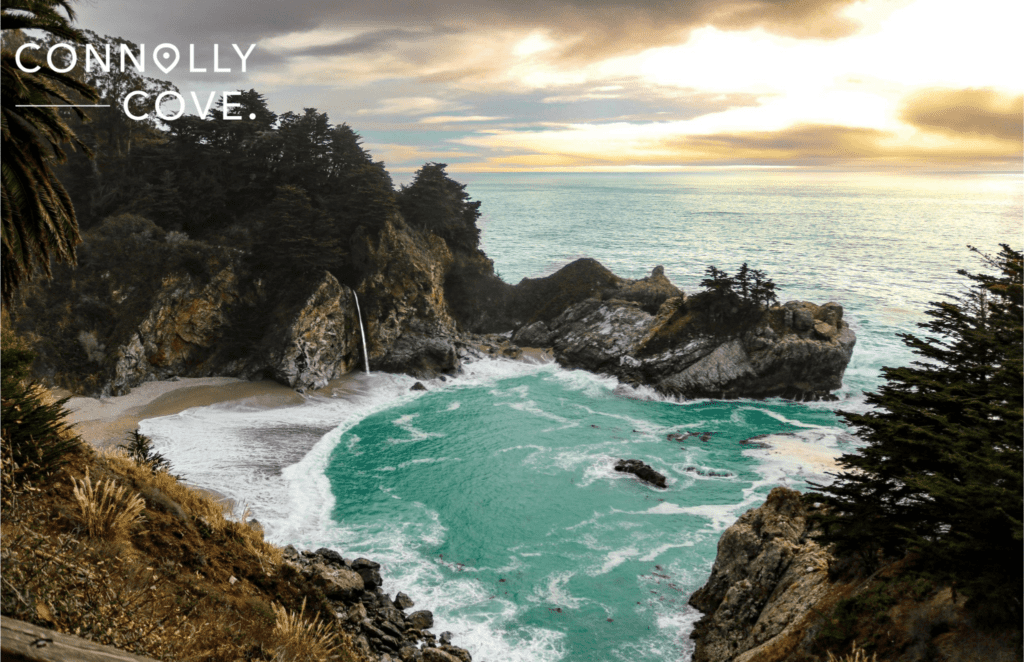
To help you fully explore the Big Sur Region, we’ve delved into the rich history, scenic attractions, and bright future that make it a cherished sanctuary along the California coastline.
Table of Contents
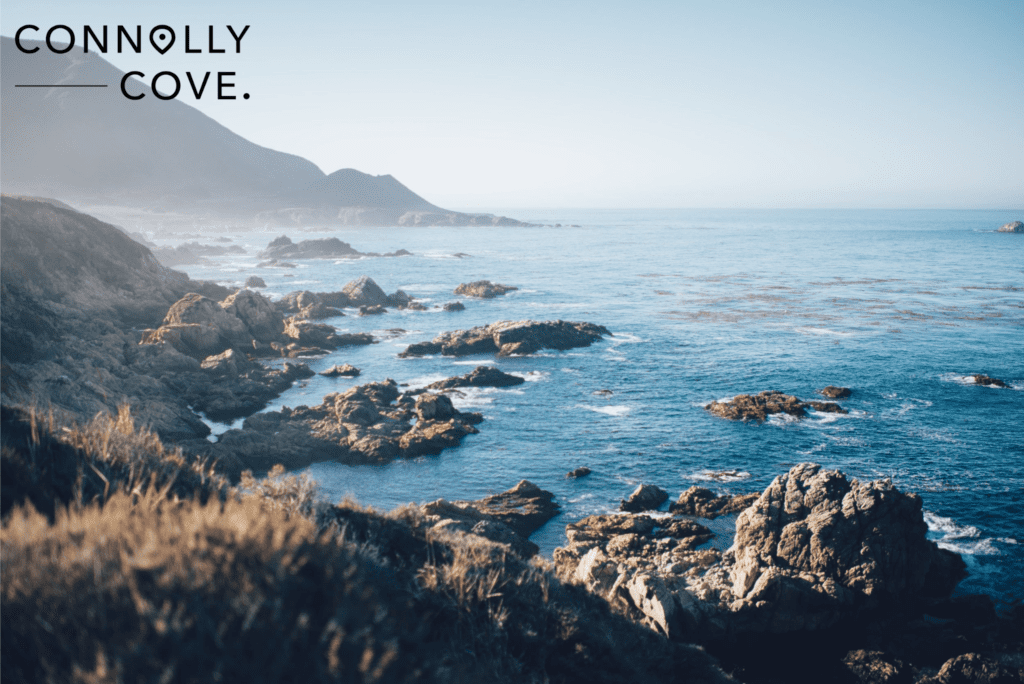
What is the Big Sur Region?
The Big Sur Region is a geographical wonder that has enthralled tourists and nature enthusiasts for generations. This region does not possess rigid, man-made borders. Instead, its boundaries are defined by the limits of its remarkable natural features.
The Big Sur stretches approximately from San Simeon in the south to Carmel-by-the-Sea in the north, encompassing about 90 miles (145 kilometres) of rugged and untamed terrain. This area is cherished for its unique topography and the extraordinary experiences it offers.
Geographical and Geological Features
One of the defining characteristics of the Big Sur Region is its dramatic and awe-inspiring landscapes. The Santa Lucia Mountains, rising abruptly from the edge of the Pacific Ocean, create an imposing backdrop that contributes to the region’s mystique.
Steep cliffs, some of which soar over a thousand feet above the water, plunge dramatically into the depths below. These cliffs, carved over aeons by the relentless forces of wind and water, are a testament to the power of nature. Deep canyons, rocky coves, and hidden beaches dot the coastline, inviting exploration and discovery.
The rugged terrain is a result of the tectonic forces that have shaped California over millions of years. Earthquakes and fault lines have contributed to the intricate array of rock formations and diverse landscapes.
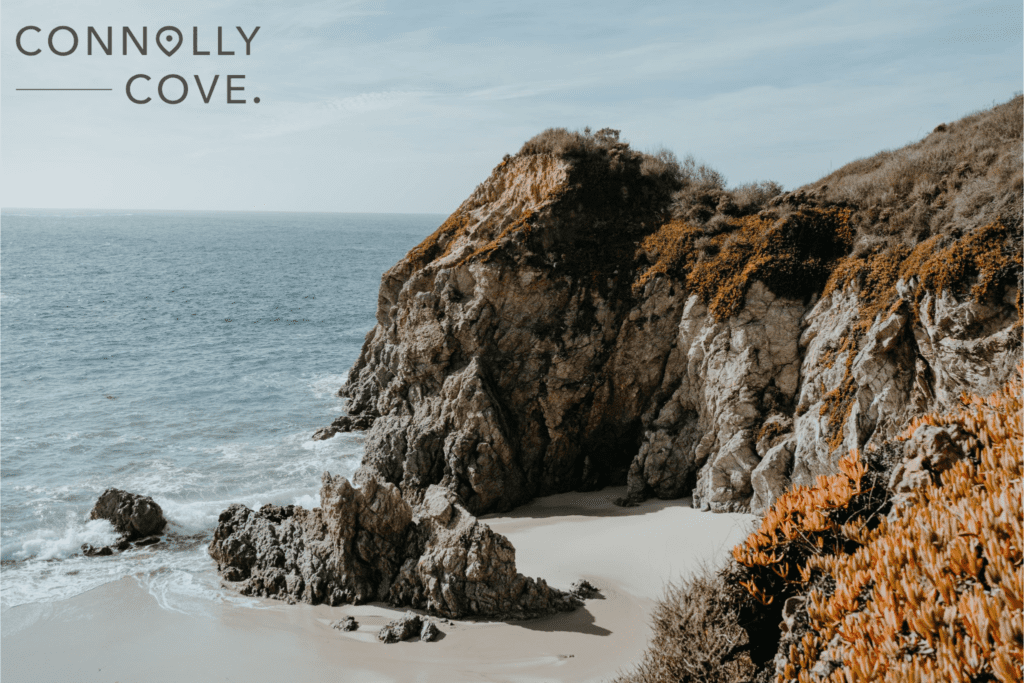
Inland, the Big Sur Region is characterised by dense forests, deep valleys, and pristine rivers. Among its geological wonders, the region boasts natural hot springs, caves, and hidden waterfalls that add to its appeal.
Importance of the Region
The Big Sur Region holds a special place in the hearts of those who seek solace in embracing nature’s grandeur. Its natural beauty is more than just scenery; it is an invitation to connect with the environment on a profound level.
The untouched wilderness and untamed landscapes create a sanctuary for native flora and fauna and visitors who wish to explore the wonders of the natural world. The breathtaking vistas, where the rugged cliffs meet the boundless ocean, inspire awe and amazement.
The region’s significance extends beyond its intrinsic beauty. It serves as a reminder of the importance of environmental conservation and the preservation of wild spaces in an increasingly urbanised world.
As urbanisation encroaches on natural habitats, the Big Sur Region showcases the importance of safeguarding these pristine landscapes for future generations. Its existence underscores the value of preserving spaces where the forces of nature have shaped the Earth’s canvas into a masterpiece.

Where is the Big Sur Region?
The Big Sur Region is a gem along the California coastline within the western expanse of the United States. The Big Sur is situated within Monterey County, one of California’s renowned coastal counties.
This natural wonder stretches along the central coast of California, making it a significant part of the state’s geographical landscape. It showcases the state’s multifaceted beauty and is a testament to the stunning variety of environments found within its borders.
Neighboring Areas
While the Big Sur Region is secluded in many ways, it is not an isolated enclave. Instead, it is a vital segment of California’s coastal landscape. To its north, it is neighbored by the picturesque town of Carmel-by-the-Sea, known for its charming architecture and artistic community.
To the south, it shares proximity with San Simeon, home to the iconic Hearst Castle, a testament to opulence and architecture. Further north along the coast lies Monterey, famous for its world-class aquarium and vibrant waterfront.
These neighbouring regions and cities contribute to the unique charm and accessibility of the Big Sur Region, offering additional attractions and services for visitors exploring the area.
Transportation Options
The charm of the Big Sur Region extends far beyond California’s borders, making it a destination that attracts visitors from around the world. Although it is a remote and rugged area, accessibility is facilitated by various transportation options.
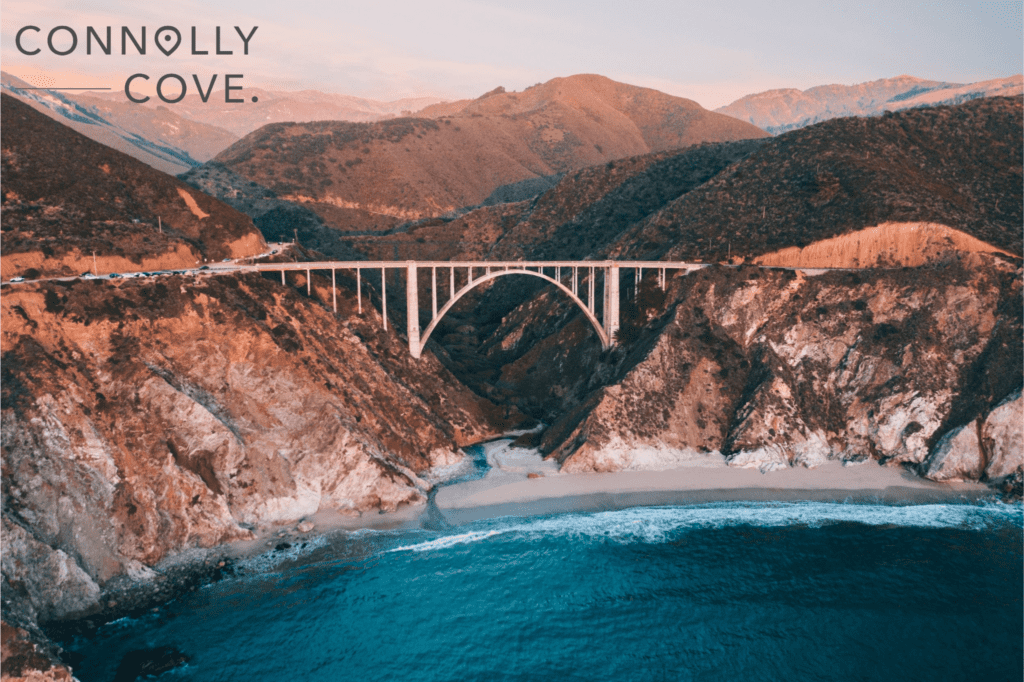
For those embarking on epic road trips across America, Highway 1, also known as the Pacific Coast Highway, offers an enchanting route that winds through the heart of the Big Sur Region. This scenic highway provides breathtaking vistas at every turn, making it one of the most iconic road trip routes in the world.
For visitors from other states or distant countries, nearby airports provide access points to Big Sur. The Monterey Regional Airport, located 40 miles north of the Big Sur Region, offers domestic flights and is a convenient gateway to the region. Additionally, the San Jose International Airport, about 100 miles to the north, provides international flight options.
History of the Region
The history of the Big Sur Region is filled with the stories of indigenous peoples who called this rugged landscape home for thousands of years. Long before European explorers set foot on its shores, the land was inhabited by Native American tribes, including the Esselen, Ohlone, and Salinan peoples.
These indigenous communities thrived in harmony with the land, relying on its abundant resources for sustenance. They forged deep connections to the region’s unique flora and fauna, leaving behind a rich cultural legacy of art, language, and spirituality.
Spanish Colonisation
The arrival of Spanish explorers and missionaries in the 18th century marked a pivotal turning point in the history of the Big Sur Region. Spanish colonisation brought significant changes to the region as missions were established and vast land grants, known as ranchos, were distributed.
The Rancho El Sur, granted to Juan Bautista Alvarado in 1834, played a particularly prominent role in the area’s history. The Rancho era saw the introduction of European livestock and agriculture to the landscape, altering the natural ecosystem.
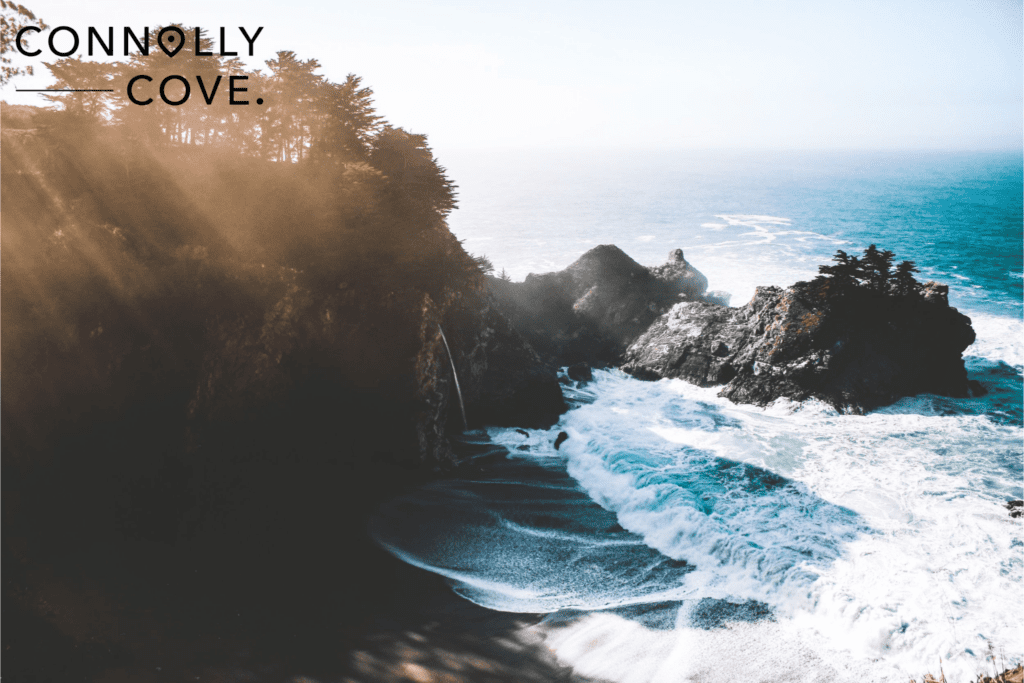
Development in the 20th Century
The 20th century witnessed a transformation of the Big Sur Region as it transitioned from relative isolation to a popular tourist destination. Improved transportation infrastructure, including the construction of Highway 1, paved the way for greater accessibility.
In the early 20th century, the area began to attract writers and artists. Visionaries like Robinson Jeffers, a renowned poet, found inspiration in Big Sur’s rugged beauty and contributed to its cultural allure.
As stories of Big Sur’s natural beauty spread, tourism flourished. Motels, campgrounds, and other accommodations sprang up along the highway, welcoming a growing number of visitors eager to experience the region’s pristine landscapes.
Conservation Efforts
In response to the increasing tourism and environmental pressures, the Big Sur Region became a focal point for conservation efforts in the latter half of the 20th century. Activists and concerned citizens rallied to protect the region’s unique ecosystems, including its ancient redwood and sequoia groves.
However, environmental conservation in the Big Sur Region has not been without its challenges. The delicate balance between accommodating tourism and preserving the region’s pristine landscapes has been a recurring struggle.
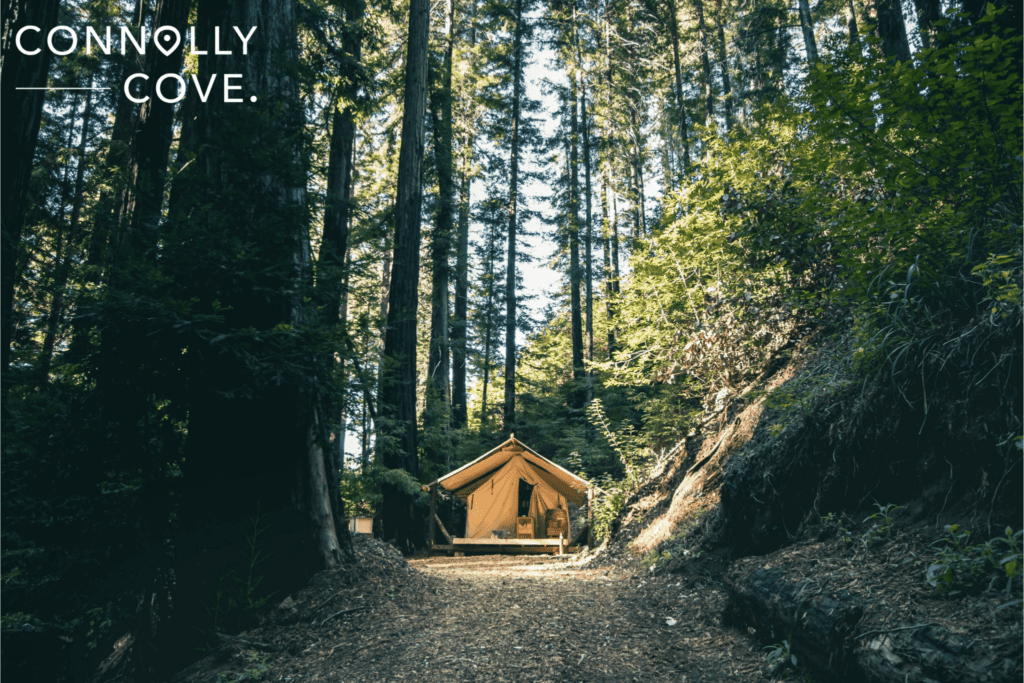
Managing wildfire risks, landslides, and fragile ecosystems while welcoming visitors requires policy and stewardship. Nevertheless, the dedication of conservationists and the recognition of the region’s importance as a natural sanctuary have resulted in ongoing efforts to protect and preserve the Big Sur Region for future generations to enjoy.
Highway 1: The Scenic Route
Highway 1, known as the Pacific Coast Highway, is a legendary road that winds its way along the majestic coastline of California. Spanning over 650 miles from Dana Point to the Leggett, this iconic highway offers some of the most breathtaking and scenic drives in the world.
However, it is in the heart of California’s Central Coast that Highway 1 truly shines as it meanders through the rugged and captivating terrain of the Big Sur Region. This highway, celebrated for its serpentine curves and dramatic cliffside vistas, is essential to the Big Sur experience.
Accessing and Experiencing Big Sur
Highway 1 is indispensable in making the Big Sur Region accessible to tourists and adventurers. Before the construction of this highway, Big Sur was a remote and isolated region, reachable only by difficult and treacherous routes.
Highway 1, completed in the mid-20th century, changed the game entirely. It made Big Sur’s awe-inspiring landscapes accessible to a wider audience. Now, visitors from all corners of the globe can embark on the journey of a lifetime, following the winding road that hugs the cliffs and offers unrivalled views of the Pacific Ocean below.
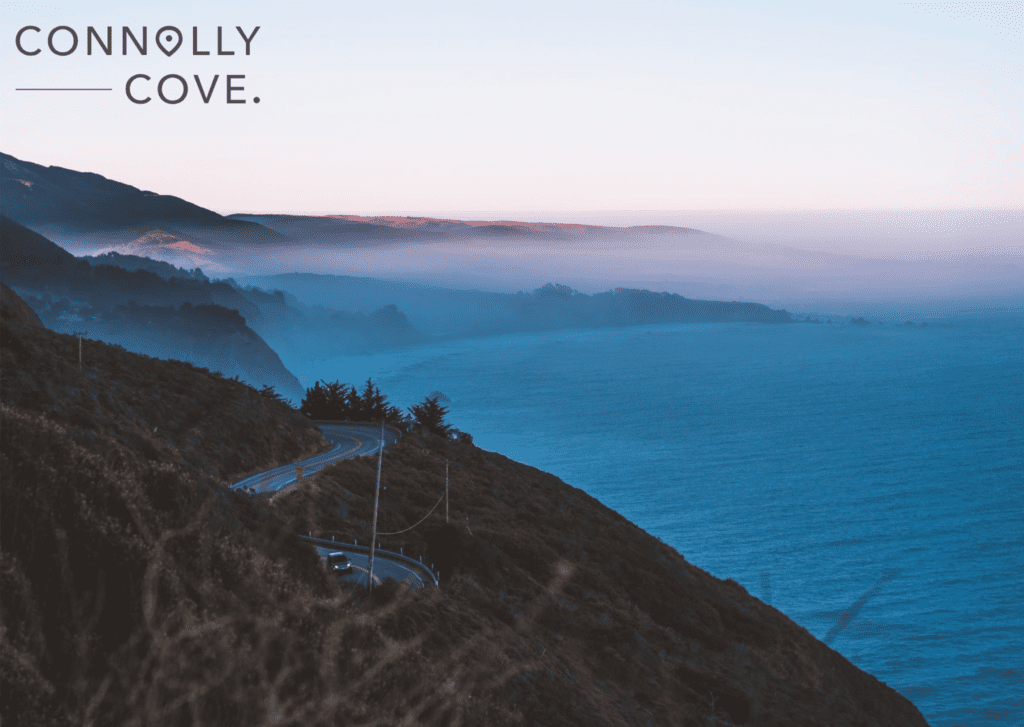
As visitors drive along its twisting route, they are treated to a continually evolving panorama of coastal beauty. The road’s tight curves and steep ascents provide a sense of exhilaration and adventure, while the frequent turnouts offer opportunities to stop and admire the scenery.
Viewpoints and Attractions
One of the remarkable aspects of Highway 1 is the iconic landmarks and natural wonders that dot its route through the Big Sur Region. These stops provide opportunities to marvel at the scenery, take photographs, and appreciate the region’s natural wonders.
Bixby Creek Bridge, an iconic arch bridge, is one of the most photographed landmarks along the highway. The bridge’s elegant design and dramatic setting make it a must-see attraction, providing a perfect vantage point to admire the surrounding coastal beauty.
McWay Falls, a picturesque waterfall that cascades onto a sandy beach, is another gem along Highway 1. It is a rare sight, as few waterfalls in the world flow directly into the ocean. Visitors can admire the waterfall from a viewpoint accessible by a short trail, offering a glimpse of Big Sur’s enchanting landscapes.
The Elephant Seal Rookery, where massive elephant seals can be observed in their natural habitat, is another captivating stop along the route. Further along, Julia Pfeiffer Burns State Park features scenic overlooks and redwood groves, providing an opportunity to explore both coastal and forested environments.
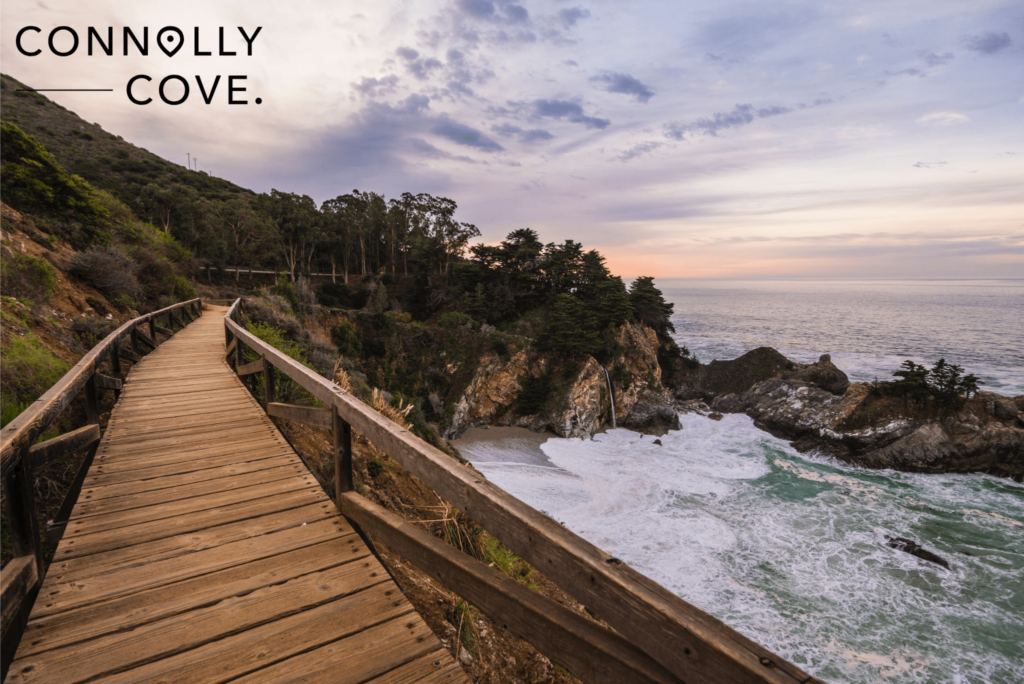
Coastal Landscapes
The coastal landscapes of the Big Sur Region are nothing short of spectacular. Along this stretch of California’s coastline, the Pacific Ocean crashes against towering cliffs, carving out deep coves and hidden beaches.
The dramatic, ever-changing contours define the coastline, where sheer cliffs plunge dramatically into the ocean below. These cliffs, some of which reach heights of over a thousand feet, create an awe-inspiring backdrop against the endless expanse of the ocean.
A sense of permanence and impermanence marks the coastline of the Big Sur Region. While the cliffs seem timeless, the forces of erosion are ceaselessly at work, shaping and reshaping the land.
The constant interplay between land and sea has resulted in a landscape that feels both ancient and dynamic, where each visit reveals a slightly different configuration of the rugged coast.
Geological Formations
The geological formations of the Big Sur Region are a testament to the power and artistry of nature. The coastline is a geological marvel shaped by millions of years of tectonic activity, faulting, and erosion.
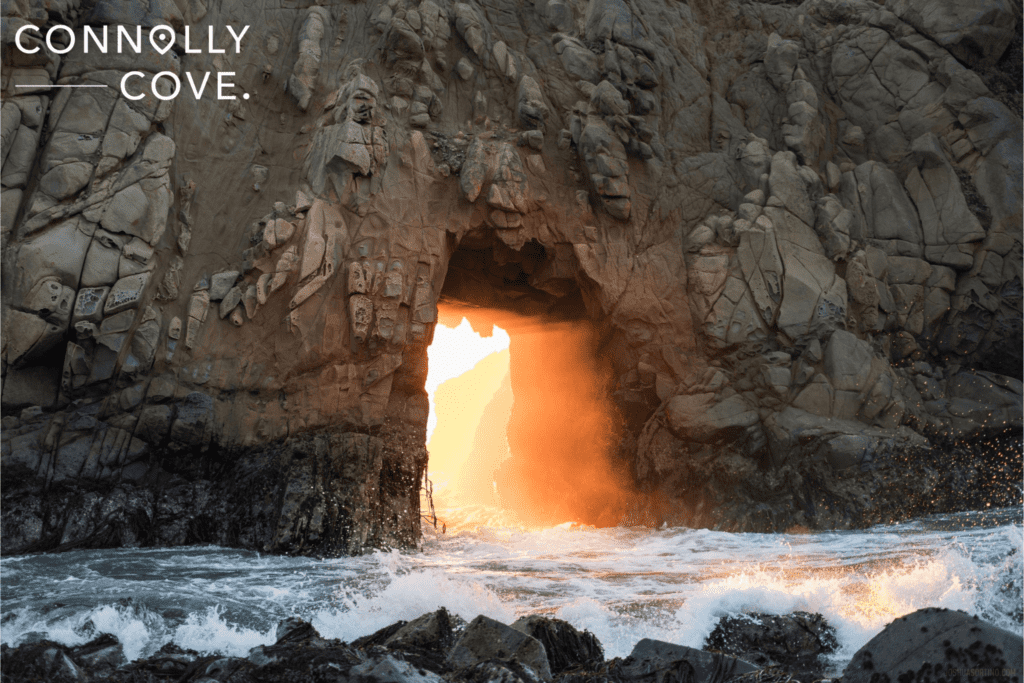
The steep cliffs and jagged rocks are primarily composed of sedimentary and metamorphic rocks, including sandstone and shale, which have been sculpted by wind, rain, and the relentless pounding of the Pacific Ocean.
One of the most striking features of Big Sur’s geological landscape is the presence of fault lines, including the San Andreas Fault. These geological fault lines are visible in the fractured rock formations and are a reminder of the region’s seismic activity.
Redwood Forests of the Big Sur Region
The redwood and sequoia trees, often called “giants of the forest,” are ancient timekeepers in the heart of the Big Sur Region. These majestic trees are renowned for their remarkable size, longevity, and ecological significance.
Redwoods and giant sequoias are distinct species, but both are awe-inspiring in their own right. Redwoods are the tallest trees on Earth, with some reaching over 370 feet in height, while giant sequoias are the largest by volume, with trunks that can exceed 30 feet in diameter.
These trees have defied the ages. Some trees in the Big Sur Region have been living for over 2,000 years, bearing witness to centuries of history.
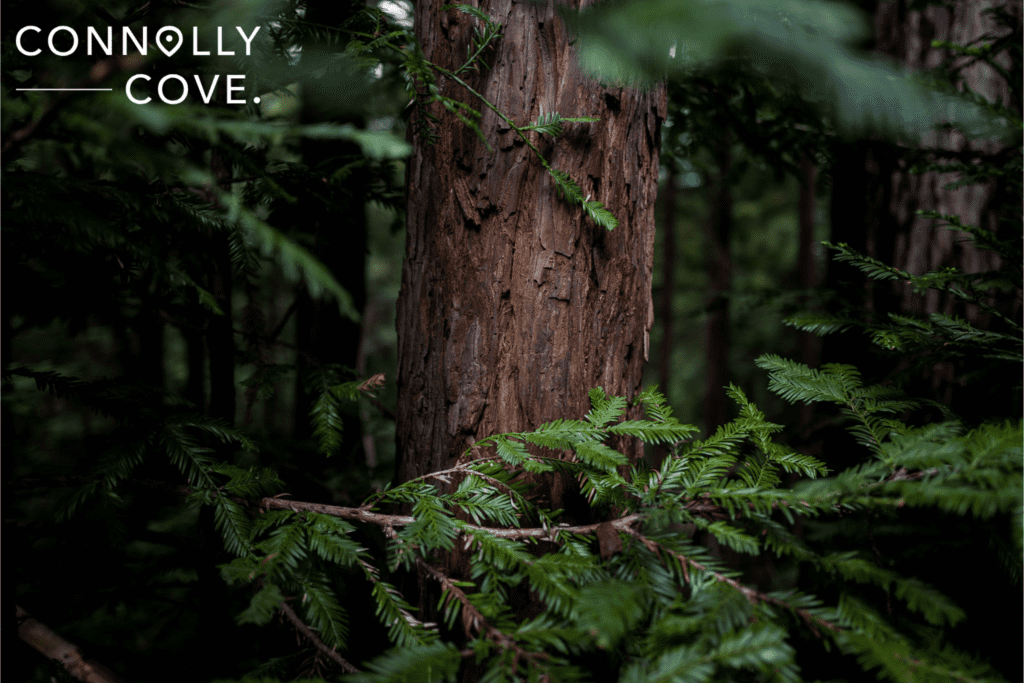
Locations of Redwood Groves
In the Big Sur Region, these ancient giants find their sanctuary in various groves scattered throughout the rugged terrain. Among the most notable is the Pfeiffer Big Sur State Park, nestled along the Big Sur River.
Here, visitors can immerse themselves in a towering forest of redwoods, with sunlight filtering through the canopy and casting dappled shadows on the grassy floor. Limekiln State Park is another location where redwoods flourish. The park’s trails wind through redwood groves, leading to the striking Limekiln Falls.
Venturing deeper into the Ventana Wilderness, the Santa Lucia Mountains shelter several secret redwood groves. The juxtaposition of the towering trees against the rugged landscapes of Big Sur creates a sense of awe and wonder, and these groves serve as a testament to the enduring vitality of nature.
Preserving These Ancient Trees
Preserving the ancient redwood and sequoia trees of the Big Sur Region is a matter of ecological conservation and a recognition of their cultural and environmental significance. These trees are living witnesses to the passage of time, recording the changes and adaptations of ecosystems over millennia.
Their immense size and age make them invaluable carbon sinks, helping to mitigate the impacts of climate change by storing vast amounts of carbon dioxide. Furthermore, redwoods and sequoias provide habitat for countless species of plants and animals, some of which are found nowhere else.

Beyond their ecological importance, redwoods and giant sequoias hold a special place in the human psyche. They are awe-inspiring and encourage people to connect with the natural world on a deeper level.
For centuries, they have captivated artists, poets, and conservationists, playing a role in the early environmental movements that advocated for the protection of our planet’s most precious natural treasures.
In the Big Sur Region, preserving these ancient trees is not only a conservation imperative but also a celebration of the enduring beauty and resilience of the natural world. It is a commitment to ensuring that future generations can continue to marvel at these giants of the forest and find inspiration in their timeless presence.
State Parks and Nature Reserves
The Big Sur Region of California is blessed with an array of state parks and nature reserves that safeguard its pristine landscapes and stunning natural beauty. These protected areas are the basis of the region’s commitment to environmental conservation and responsible tourism.
Among the most renowned is Pfeiffer Big Sur State Park, a sprawling expanse nestled along the banks of the Big Sur River. Its redwood groves, picturesque trails, and the picturesque McWay Falls in the park are iconic attractions that draw visitors from around the world.
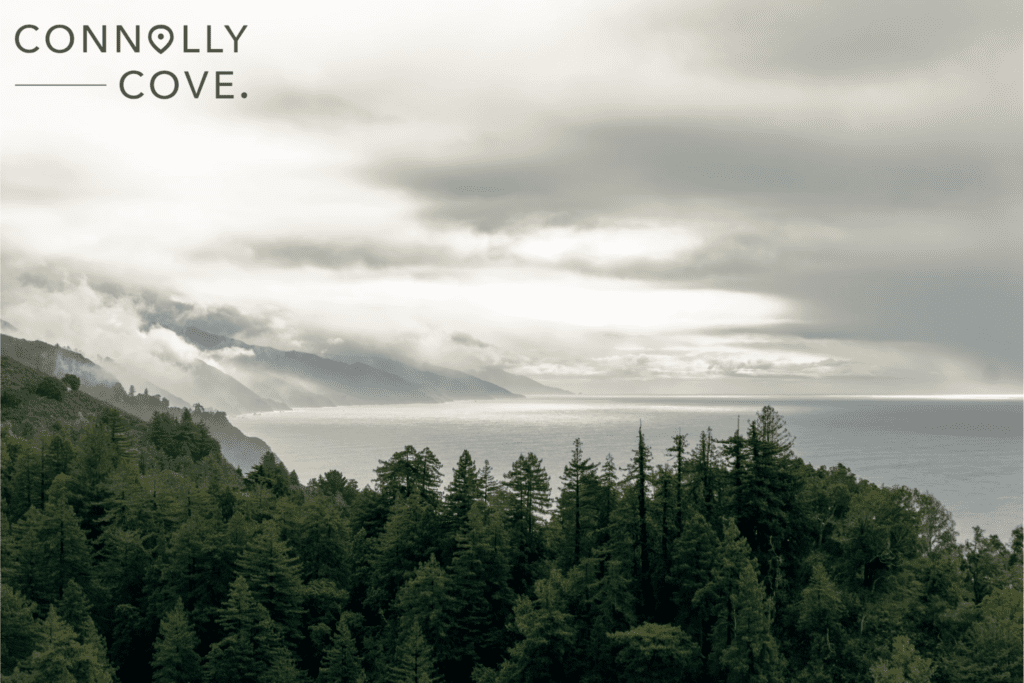
Garrapata State Park, to the south, offers rugged coastal hiking experiences with dramatic views of the ocean and rocky shoreline. Nearby, Limekiln State Park surprises visitors with its redwood groves and the enchanting Limekiln Falls.
Recreational Activities and Experiences
The state parks and nature reserves in the Big Sur Region offer a diverse range of recreational activities and outdoor experiences. Hikers can explore a labyrinth of well-maintained trails that wind through ancient redwood groves, along rugged coastlines, and into tranquil canyons.
Camping is a popular activity, allowing visitors to immerse themselves in the region’s natural beauty and serenity. Birdwatching, wildlife photography, and nature observation are also favoured pastimes, as these protected areas flourish with diverse flora and fauna.
For the more adventurous, some state parks offer rock climbing, mountain biking, and horseback riding. Pristine rivers and creeks provide chances for swimming and fishing, and coastal parks offer ocean-related activities like tide-pooling and whale watching.
Conservation and Biodiversity
Conservation efforts within the state parks and nature reserves are integral to preserving the unique biodiversity of the Big Sur Region. These protected areas provide safe havens for various plant and animal species.
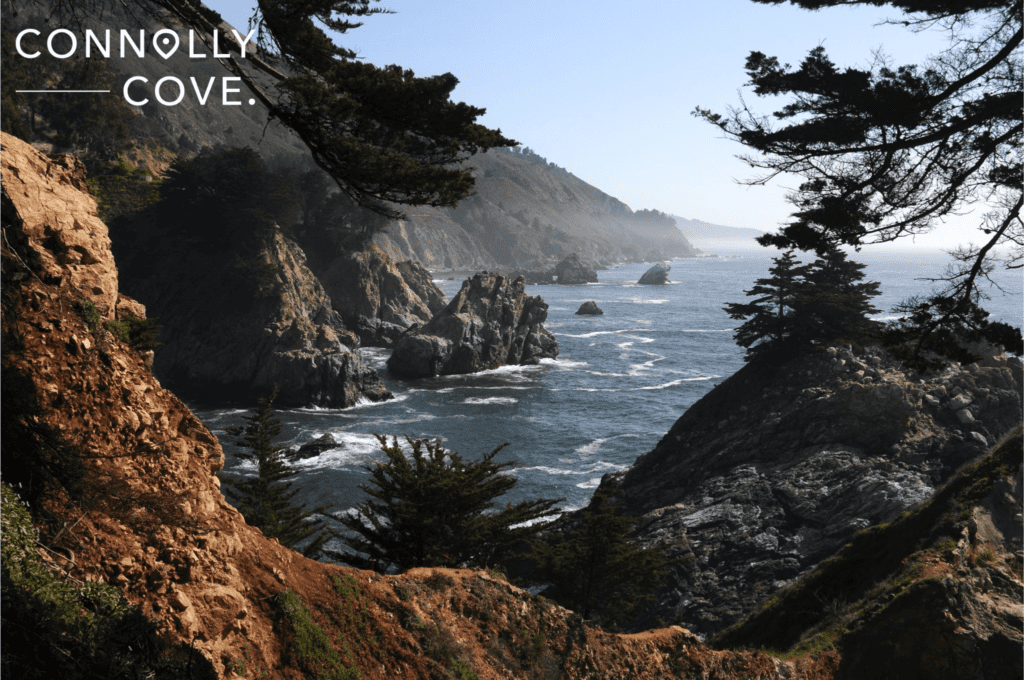
Redwood and sequoia groves, along with diverse chaparral and coastal ecosystems, contribute to the region’s ecological diversity. Notably, these habitats support species like the California condor, a critically endangered bird that has found refuge in the rugged landscapes of Big Sur.
Conservation initiatives include habitat restoration, invasive species management, and wildfire prevention. Sustainable visitor management is also a priority to minimise the impact of human activity on these delicate ecosystems.
These efforts are critical in safeguarding the region’s natural treasures for future generations, ensuring that the Big Sur State Parks and nature reserves continue to be places of beauty and ecological significance where humans and nature coexist harmoniously.
Cultural Attractions
Artistic and Literary History of Big Sur
The Big Sur Region has long been a muse for artists and writers, attracting creative souls with its raw and untamed landscapes. The region’s artistic and literary history is deeply intertwined with its rugged beauty and sense of isolation.
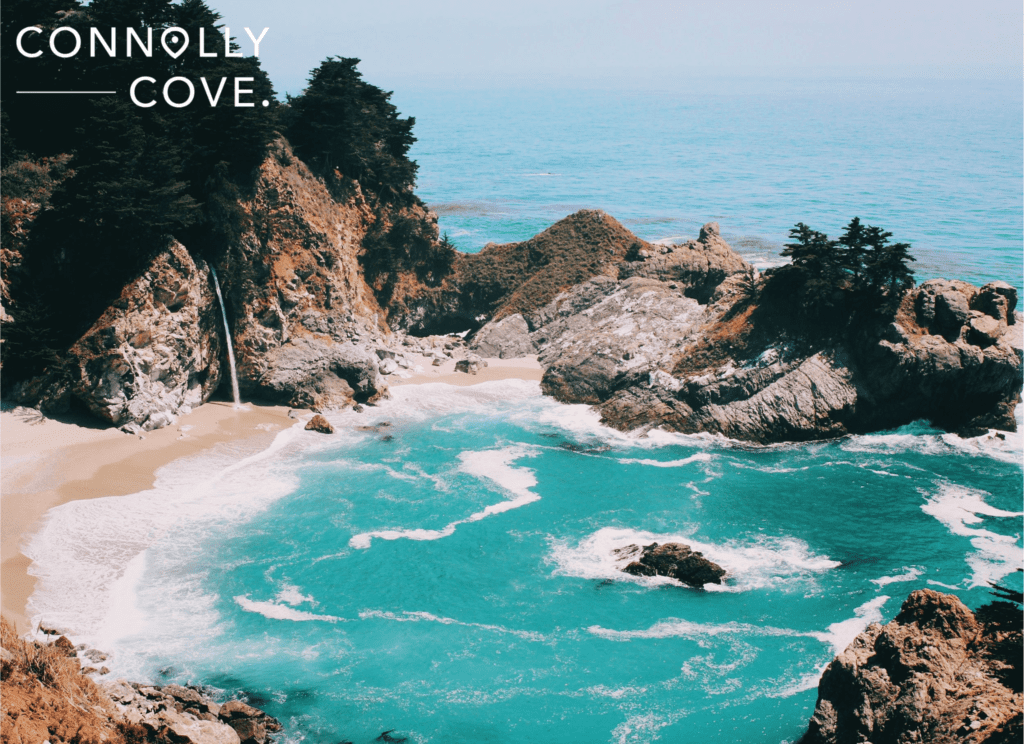
Robinson Jeffers, a celebrated poet, and others found inspiration in the dramatic cliffs and the ever-changing Pacific Ocean. Jeffers’ poems, often centred on themes of nature and human existence, are infused with the spirit of Big Sur.
Henry Miller, another iconic writer, penned works like “Big Sur and the Oranges of Hieronymus Bosch,” where he captured the essence of the region’s wilderness and solitude.
The allure of the Big Sur Region has also drawn photographers, painters, and musicians. The renowned landscape photographer Ansel Adams captured the region’s beauty in his evocative black-and-white photographs.
Artists have found the region’s landscapes and natural wonders to be an endless source of creativity, contributing to the cultural legacy of Big Sur and inspiring countless works of art.
Notable Cultural Figures
Big Sur’s cultural significance extends beyond its landscapes to the notable figures who have made it their home or found inspiration within its bounds. Jack Kerouac, a luminary of the Beat Generation, spent time in the Big Sur Region and penned the novel “Big Sur” based on his experiences there.
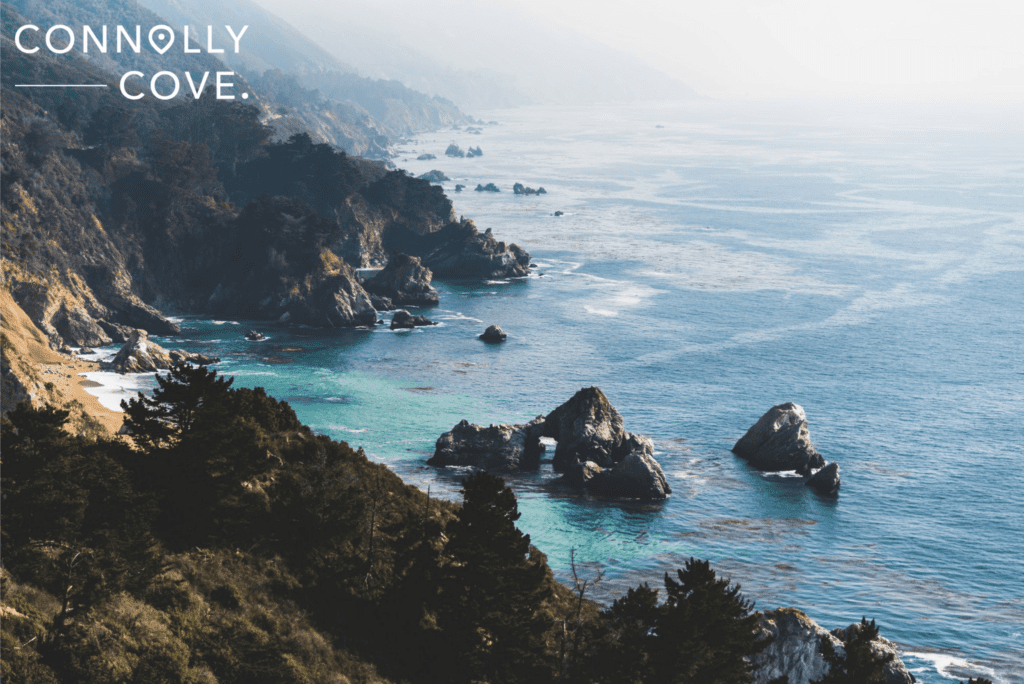
Author and poet Lawrence Ferlinghetti, a key figure in the San Francisco literary scene, also had a deep connection to the region. Photographer Edward Weston established a home and studio in Carmel, just north of Big Sur, where he produced some of his most iconic works.
Big Sur attracted figures like Orson Welles, Joan Baez, and Joni Mitchell, who sought refuge in its isolation and natural beauty. These cultural luminaries, among others, have contributed to the region’s draw as a haven for artistic expression and free thinking.
The Henry Miller Memorial Library
At the heart of Big Sur’s cultural scene is the Henry Miller Memorial Library, an institution dedicated to preserving the region’s legacy. Named after the renowned author Henry Miller, who lived in Big Sur, the library serves as a focal point for artists, writers, musicians, and thinkers from around the world.
The library’s mission also champions environmental conservation and community engagement. It embodies the spirit of the Big Sur Region as a place where nature, art, and humanity converge.
The library’s role as a cultural institution is emblematic of the enduring connection between the people who are drawn to the Big Sur Region and the landscapes that have inspired countless works of creativity and contemplation.
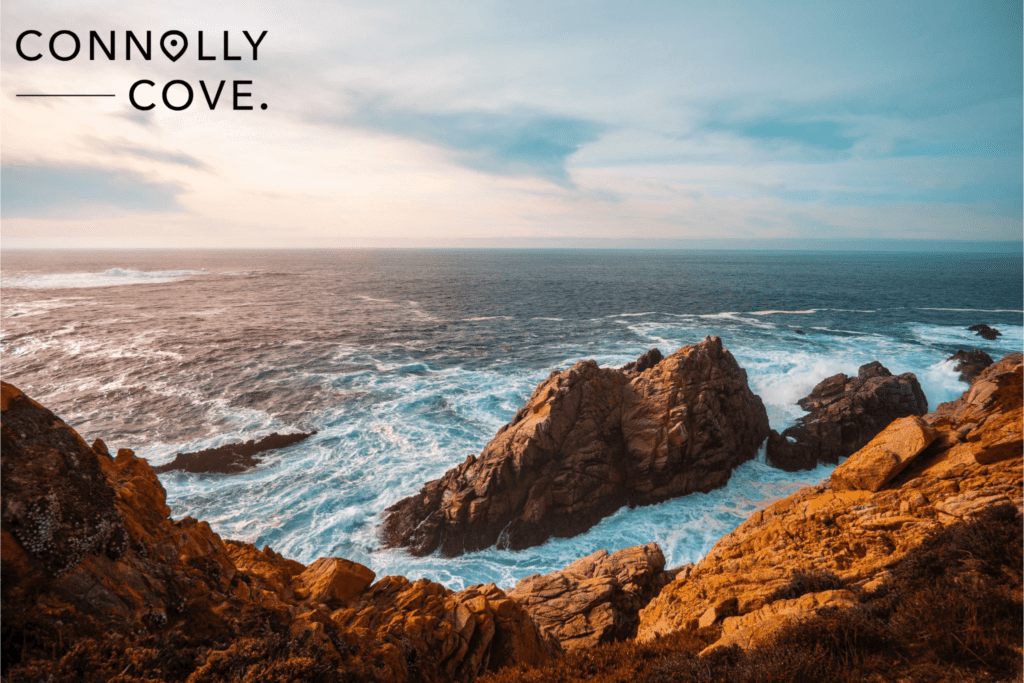
The Big Sur Region is a Scenic Escape from Daily Life
The Big Sur Region in California, USA, is an area of unparalleled beauty and home to some of the greatest natural wonders that grace our planet. Its rugged coastline, ancient redwood forests, and pristine state parks offer an escape into a realm of untouched wilderness and breathtaking vistas.
However, the Big Sur Region is not without its challenges. Environmental issues, from wildfires to erosion, highlight the delicate balance between human interaction and ecological preservation.
As visitors and residents of this unique region, it is our collective responsibility to embrace sustainable practices and thoughtful tourism to ensure that Big Sur’s natural treasures continue to captivate and inspire generations to come.
In the face of its challenges, the Big Sur Region remains a sanctuary of endless beauty, a refuge for seekers of solace and adventure, and a reminder of the enduring power of nature to inspire and rejuvenate the human spirit.
If you want to explore California’s most fascinating geographical wonders, check out Death Valley: The Ultimate Travel Guide & 6 Great Attractions.






